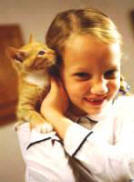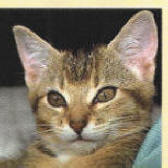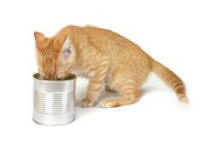|
Need Help?
|
|
Call
1-800-372-3706
to
speak to a Veterinary Behavior Technician |
|
Paws To Speak!
Members
Main Menu
|
|
 |
 |
|
Help is at your
fingertips by library, email, and phone. |
Library
Topic
General Principles


Would
you like to suggest edits?
Learn More...
|
Getting Started -
 A
common mistake people make with new
kittens is feeding only one type of
free-choice dry cat food.
Why worry if your kitten grows up to be a
picky eater? A
common mistake people make with new
kittens is feeding only one type of
free-choice dry cat food.
Why worry if your kitten grows up to be a
picky eater?
Cats that only eat certain textures and
tastes of food may suffer if put on special
diets. Cats can become fixed on certain food
shapes and textures - not accepting anything
else as food.
It may also be harder to give tasty
medicines or hide medicines in the food of a
cat that is food-fixated.
Change bags of kitten food types
every couple of months or in other ways feed
a selection of foods for the first year.
Feed your kitten a selection of premium dry
and wet kitten foods of various flavors,
sizes, textures, and shapes.
You can also entice your kitten to
eat new foods by hand feeding the
new food when your kitten is very
hungry. Mix any new food in with favorite foods to encourage
acceptance.
Observe your kitten carefully to
eventually select the brand correlated with your kitten's ideal
energy level, coat condition, and no eye discharge. Consult with
your veterinarian on how to select quality pet foods to meet
early nutritional needs.
For your Education...
Late Socialization: 9 to 16 weeks old:
Eating solid food; begin losing baby teeth
AAFP. (2004). Feline Behavior Guidelines.

|